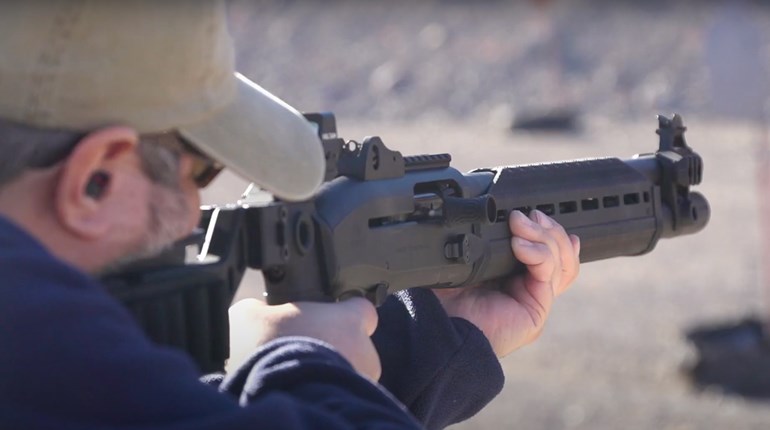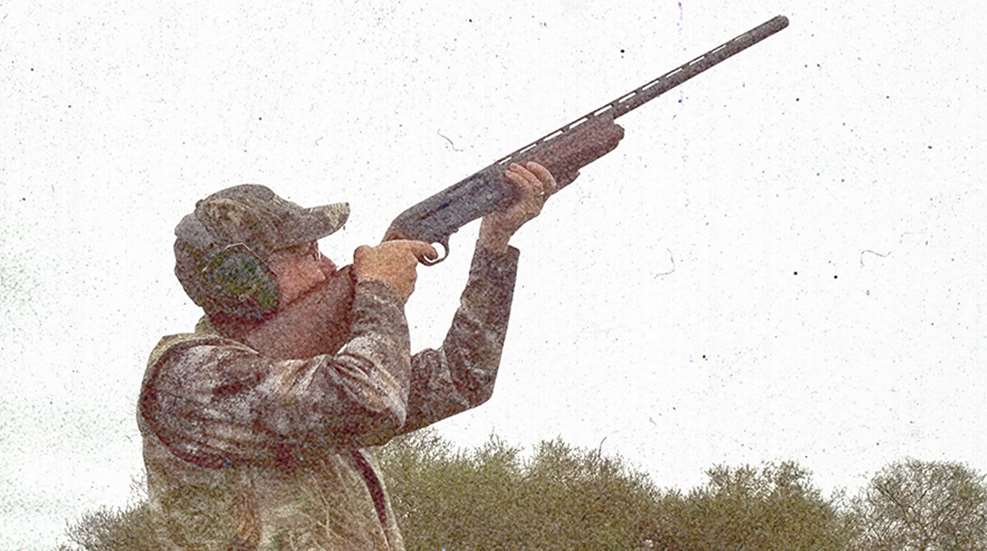
This is not a gun-cleaning article, though passages on cleaning are key to the story. Rather, it is a gun-dirtying article, one about how to foul your shotgun to such a disgusting state that it no longer runs. Perverse as that sounds, be assured our reason for doing so was strictly analytic, beginning with an examination of the operational limits of Remington’s relatively new V3 self-loader.
No, you don’t need to push a gun until it fails to feed, to eject, to fire or until it's impossible to load in order to know what you’ve got. Given periodic cleaning most scatterguns deliver long, faithful service, and hunters rarely shoot enough to wear out the parts. But because the V3’s calling card is an innovative action design that is claimed to run cleaner and to shoot softer, we were curious. I mean, how do you know if your truck hauls a heavier load, if your Ferrari corners at higher speed, or if you can consume more wings than your buddy unless you probe those limits? We wanted to see what that looks like in shotgun endurance, and as you see below, it ain’t pretty.
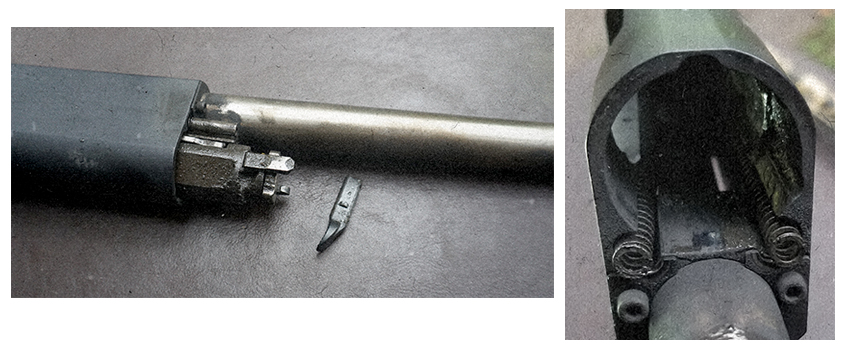
If ever a methodology was devised not only to yield answers but also to please the testers, this was it. In the name of science, and with the blessing of Remington execs, we headed to the dove fields of Argentina, the one place on Earth sure to yield a “cry-uncle” volume of real-world wingshooting. We were issued a half-dozen of the slender, reasonably priced V3s along with two of Remington’s sharpest young product specialists, Daniel Cox and Hunter Cummings, and bid to do our worst.
We booked 3½ days with Argentina Big Hunting in the famed Entre Rios province, where visiting sports find a wingshooting trifecta that combines ducks and perdiz with prodigious doves. Truly big was our opportunity and the resulting take, not to mention the hospitality of outfitter Patricio (Patrick) Geijo and his staff at the historic Santa Adela lodge.

The Riverlands
Arriving at midday, weary but eager, we took time for lunch, beginning with tapas featuring the peppery lean meat of a capybara taken that morning by a young American on holiday with his dad. One partner timidly declared he wasn’t eating “rat,” and indeed this South American critter growing up to 160 pounds is the world’s largest rodent. More for the rest of us, who found it delicious, and then all were ushered into a proper dining room with linens, china and a meal good enough to be called cuisine.
Even so, no one dallied over his food because we were keen to head out and start piling up data. A drive through small towns took us into ag-rich bottomlands flanking the Rio Uruguay, the international boundary with a country of the same name.
After 2½ busy days, the V3s still revved through shells, and total misfires could be counted without removing a boot.
Back a dirt track through cattle gates we found another river, but this one was overhead. It was a fast-flowing stream of doves, an airborne biomass as much as a half-mile wide, but which stretched as far as we could see back along their flyway. The speeding birds didn’t quite darken the sky but rather came in waves, one after another, sometimes angling right, other times left, many head-on. There’s no telling how many streamed past, as each wave held anywhere from several dozen to several hundred, flying so swiftly that we had one chance to empty our guns before they were gone. For each bird targeted, hundreds skated by unscathed. Luckily there were always more.
That first afternoon we posted up with our backs to a woodlot. Our quarry’s line of approach was considerably lower, but upon hitting shotgun range, they popped their flaps and flared vertically. That put a kink in our swings. After the first box of shells I started to get it, except on direct incomers. Close-range vertical shots rarely worked, and I did better trying to hit out front just as they started climbing.
Along the line, 12-bores pounded away and dead birds rained down. With dusk approaching and empty hulls from two-plus cases forming a brass-and-green carpet around my stool, I traded gun for camera and went to visit my partners. Hunter and Courtney were looking pretty good for guys who had fired 700 or more 12-gauge loads apiece, a cumulative recoil around 25,000 ft.-lbs. In the groove, those guys were hitting nearly every shot.
Despite firing practically non-stop, we could’ve done much more if we had booked all-day dove shooting. Instead we opted for the local combo specialty, half-days on the dove stands, and other time ambushing ducks and/or following pointers to quail-like perdiz.
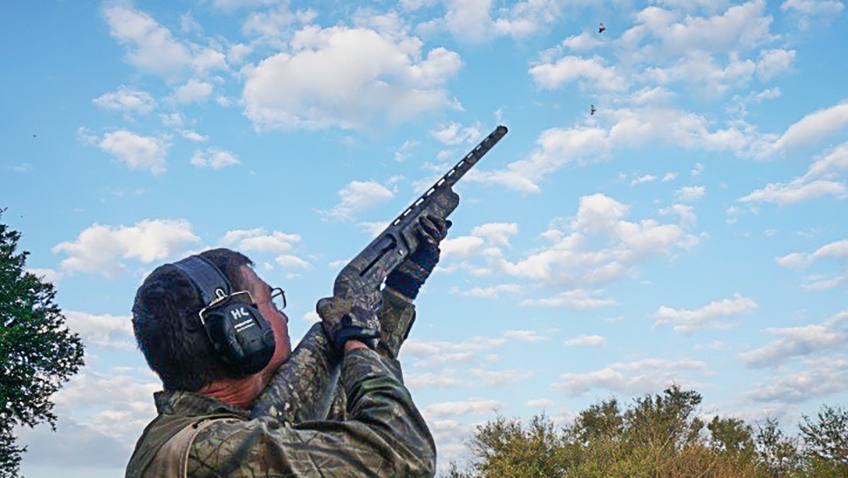
Primarily pasture and grainfields, the low-lying riverlands were studded with farm ponds and potholes attractive to wintering waterfowl. Snugged behind two-man blinds overlooking decoys, we collected Brazilian, ringed and silver teal, along with a few odd bigger birds. Like our northern teal, these dwarf ducks were fast, jerky fliers, and though occasional bunches stooled to the spreads, most buzzed our sets barely skipping a wingbeat. It took exaggerated lead to knock them down, especially those on the water’s far side. But since repetition makes nearly all things possible, we came in at mid-morning with two-man bags approaching three figures.
After 2½ busy days, the V3s still revved through shells, and total misfires could be counted without removing a boot. I began to wonder if the innovative guns might make it to the finish line without so much as a squirt of oil.
But it was not to be, and the crash was sudden. Duck hunting on our final morning, my gun blinked. First it stopped short of complete lock-up after cycling, then it failed to eject empties. I was running a single-shot before emptying the next box, my 60th all told. Let’s call it 1,495 shots. My partners were pretty close, except for one who had started oiling his bolt and return springs earlier and was still in business through 70 boxes.
While we didn’t set any records (based on what I know from two previous Argentina trips and from others who’ve been there) the V3s did themselves proud. I’ll detail below what we found upon cleaning, but nonetheless must salute this design for how neatly it disassembles.
However we can’t end on that note because, well, the V3 isn’t my favorite shotgun. It’s a darn good one and may be the best value on the market. But I’m mindful of how hard-core field gunners tend to be adamant about their favorites. Frankly I’m not sure what mine is.
Also, let’s recognize an enduro shoot in the Argentine dove fields really isn’t apples-to-apples with the abuse dished out to our working shotguns here in the USA. We subject them to heavier loads, longer shells, steel and tungsten shot, frigid temperatures, mud, snow, rain, saltwater, boat rides and 100-pound retrievers. And for most owners, it’s not so much about tackling intense but brief extravaganzas of nonstop shooting as it is about showing up ready for work throughout extended seasons year in and year out. As such, let’s broaden the scope by comparing the V3 with three popular competing models also known as tough, trustworthy tools, yet at the same time, shooter-friendly.
Four New Workhorse Shotguns
The Remington V3’s operating mechanism is neatly contained between the rear of the receiver and the breech. Upon firing, propellant gases vent through tiny ports adjacent to the shell chamber. That gas impels two small pistons secured in a breechblock on the underside of the barrel, which in turn retract the bolt. If the VersaPort system isn’t sufficiently high-tech, then the twin return springs, situated opposite one another along the lower receiver walls, surely are. This keeps weight between the hands since there’s no buttstock spring or lengthy return spring coiled around the magazine tube.
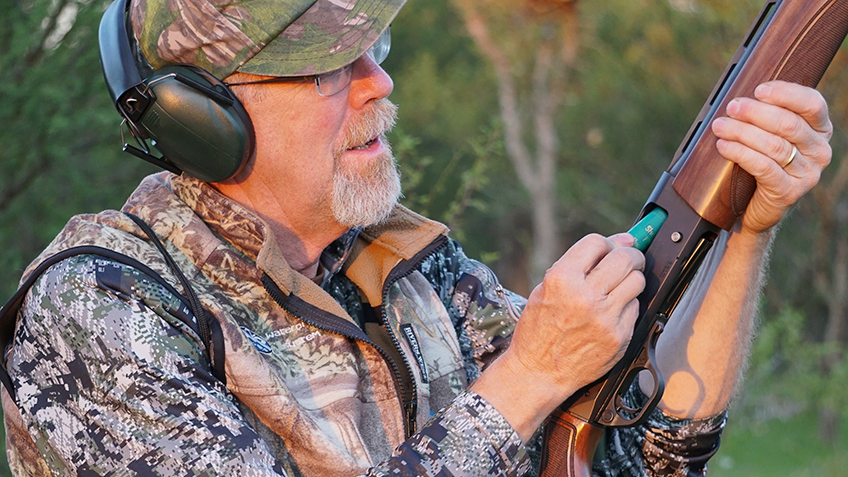
Because the gas is vented at the breech, Remington says less fouling accumulates and what does is confined to a small area. In truth, our hard-ridden V3s were grungier than a stray dog, though it was limited to an 8-inch swath. The pistons, bolt assembly, springs and inner receiver walls were caked in sludge, and it had baked to a carbon crust around the root of the magazine tube. Since all moving parts pull out easily, clean-up went quickly, including swabbing the inside. There was no need to cope with a dirty return spring.
Remington issued a chart comparing V3 recoil to competing models (not the ones discussed here) and its curve was the flattest by far, with force delivered over a longer time frame. In theory, shooters feel more of a shove than a sudden punch, and once again the VersaPort is responsible, since it uses shell length to regulate the gas needed to cycle the action and dumps the rest. Short sessions hadn’t convinced me, but after our go in the dove fields my partners and I can vouch the V3 truly is mild-mannered. Unlike previous trips, I returned bruise-less and without a swollen cheek.
Your 40-Year Gun? Affordable (starts at $895 MSRP) and innovative, it is our sole U.S.-made entrant. A genuine recoil-tamer, its centralized weight also intends to make shooting more intuitive. But less than five years since introduction, who can say how its mechanicals will hold up over a lifetime? And if high-flying geese are your game, note it does not chamber 3½-inch shells.
■ ■ ■
Benelli's Super Black Eagle (SBE) uses an interia system to cycle its action. When recoil jabs the gun rearward, the free-sliding bolt recoils at a slower pace (hence the inertia) thanks partly to a stout spring pressing against the bolt head. After opening, a recoil spring in the stock causes the bolt to rebound, pick up a fresh round and cycle back into battery. Propellant gas is not involved in the operation and mostly exits out the muzzle.
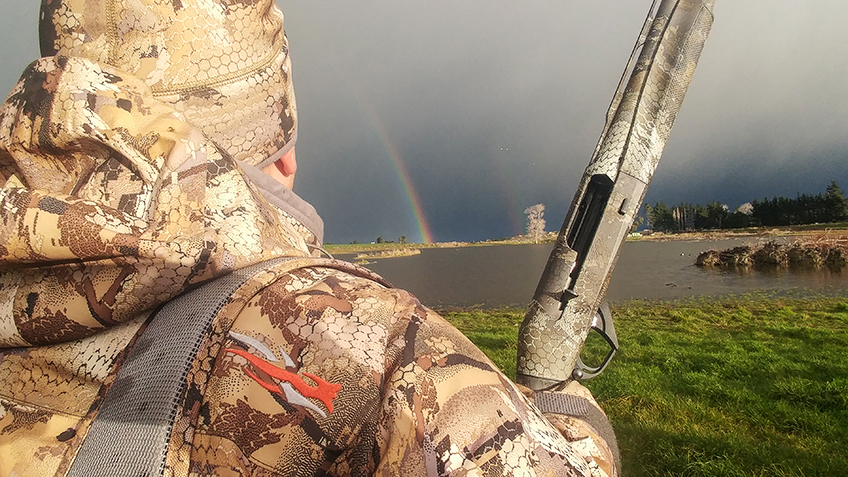
American Hunter Field Editor/long-time Benelli owner Jeff Johnston agrees, even after a marathon, multi-species shakedown of the current SBE3 in New Zealand. “I purposely did not clean it once during a week of hunting, but rather abused it with mud and more than 1,000 shots,” he wrote. “The gun was silly clean ... didn’t even look that dirty, and that’s because I really do think the inertia action does a great job of blowing grime out the barrel.” Its design involves minimal parts, so cleaning is easy, at least until time to remove the buttstock to get at the recoil spring and cup.
Benelli contends its ComfortTech3 stock dramatically slashes felt recoil. It has shock-absorbing rubber inserts plus a soft comb that allows the buttstock to scrunch together for a split-second.
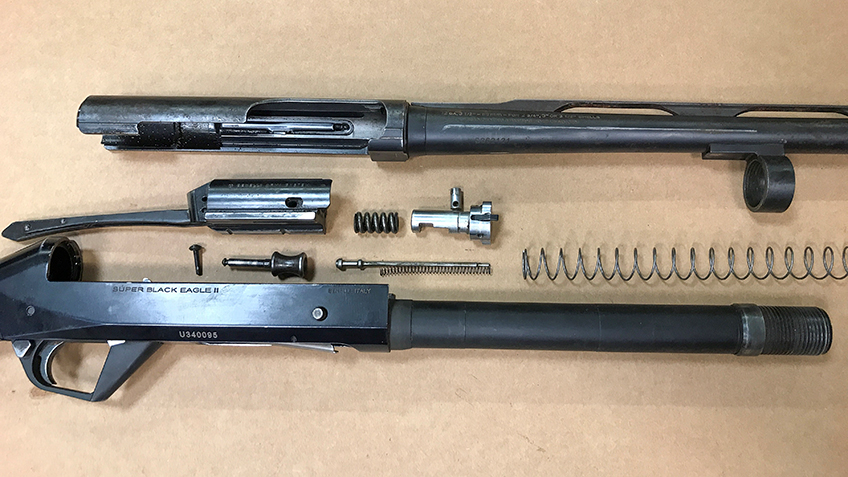
Your 40-Year Gun? Face it, Benelli reliability all but banished pump guns from American duck blinds, and the SBE3 fixed most of the gripes about earlier editions. SBE loyalists swear it’s tough, smooth and shootable. Why not? Sticker shock—$1,899 MSRP—could be a legitimate concern, but if you amortize over decades, is that really a factor? Not everyone agrees the trim SBE3, or any inertia model, shoots as soft as gas-gun competitors.
■ ■ ■
The Beretta A400 Xtreme relies on a forward return spring, hence the working parts and greater weight sit in front of the receiver. Encircling the magazine tube, the stout spring and its carrier are shoved rearward by a gas-actuated piston located inside the magazine cap. Excess gas escapes via a set of fore-end louvers. Though fouling catches the forward assembly, A400 enthusiasts say it cleans easily, especially if shooters run a “dry gun,” i.e., one with minimal crud-attracting oil. Carbon buildup is further reduced by the piston’s “elastic scraper band that functions as a gasket.”
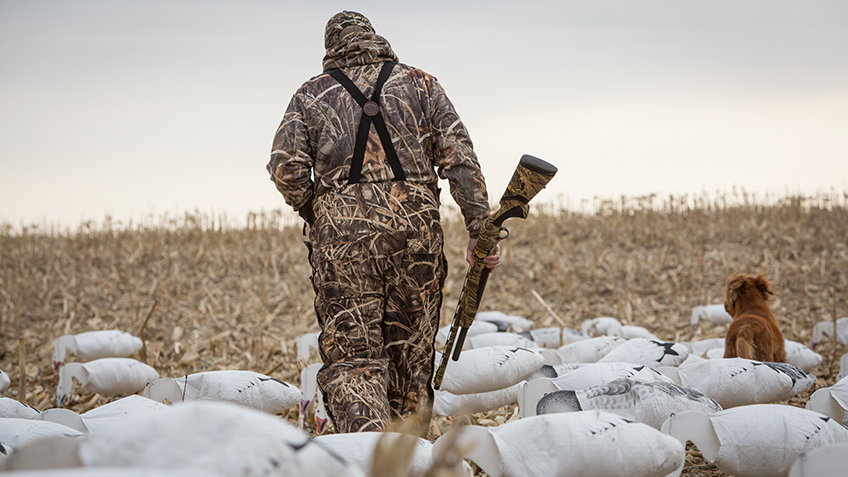
Two fans include Delmarva-based goose hunters Pat Skipper and Dale Hopkins, who own multiple Berettas, hunt straight through into March and travel extensively with their shotguns. Hopkins still hunts with his first—now fitted with an extended mag—and says it has fired 10,000-plus rounds and suffered just one broken spring in 15 years.
To mitigate boomer 3½-inch loads, Beretta installs two sets of its proprietary Kick-Off mini-hydraulic shock-absorbers in the stock. One set located in the pistol grip reportedly offsets the initial thrust, while few inches back, the other cushions against the bolt slamming rearward. Yes, Kick-Off hardware heavies up the butt, but A400 owners swear it’s worth it.
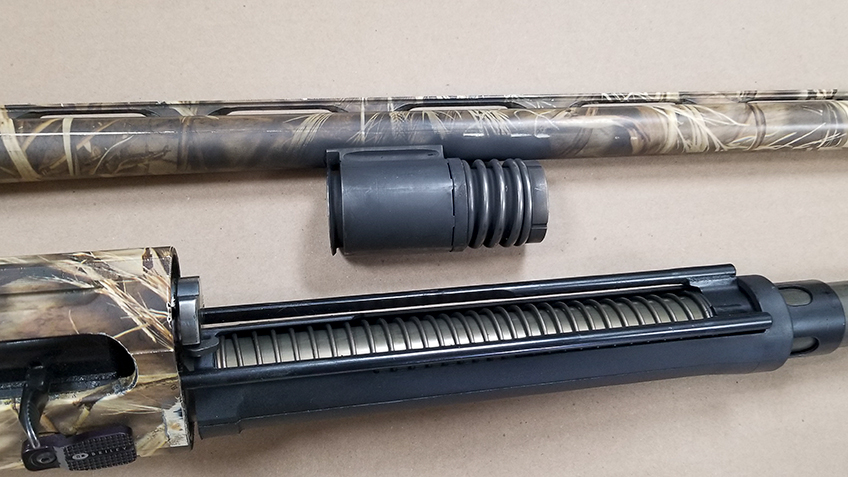
Your 40-Year Gun? Beretta named this action the Blink because it works so fast, supposedly allowing shooters to fire five shots in about one second. The A400’s long, enthusiastic reputation speaks for itself. Shooters who prefer lightweight guns will not appreciate that the new A400 Xtreme Plus, about 8 pounds, is the heaviest in class. And starting at around $1,750 MSRP, it’s among the costliest, too.
■ ■ ■
The Winchester SX4 is a relative newcomer, but utilizes an operation proven in Browning Gold and Winchester SX3 autoloaders. Called the Active Valve Gas System, it is reputed to efficiently self-regulate gas needed for cycling.
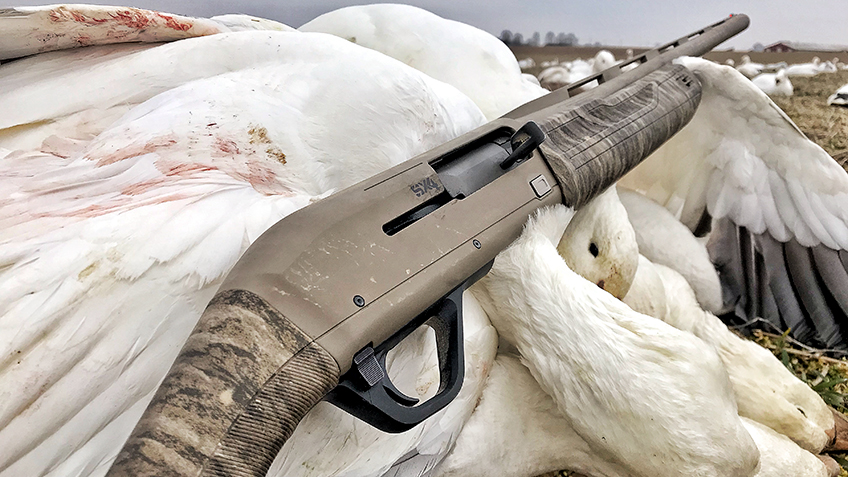
Intended for hard use, the 12-gauge SX4 Waterfowl Hunter has a 3½-inch chamber. NRA's Christopher Olsen, who along with others has used it on multiple snow goose outings, said he's seen few failures to eject and no other problems. The gun’s piston sits within the barrel support ring. Gas vented directly from the barrel punches the piston rearward, where it bumps a polymer sleeve fitted with a steel operating rod. The rod engages the bolt to open and clear the action. A heavy return spring sits in the buttstock.
The gas system’s self-regulation means only finite volume can enter the confined piston area before its stroke is completed. While there are twin louvers on either side at the front of the forearm (four total) to vent excess gas, it appears—based on fouling residue—that excess gas also vents through gaps between top edges of the forearm and the barrel. While we lacked high-volume opportunities with the SX4, fouling was minimal in the action. Some residue formed on the barrel surface, but mostly collected on the piston. While that unit is not meant for disassembly, it can be dunked in solvent. The butt needs to be removed for return-spring maintenance.
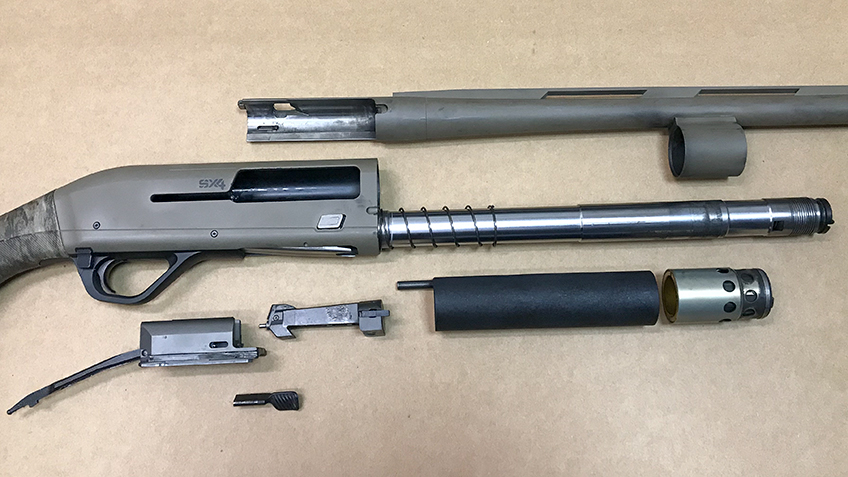
Unlike others profiled here, the SX4 lacks a built-in recoil reducer. Olsen said neither he nor his hunting partners were much affected by their 3-inch goose loads, but other users question how a shotgun that weighs only 7 pounds couldn’t be a fierce kicker when firing stout loads.
Your 40-year Gun? The SX4 is a speedy cycler. For clays and/or upland shooting, the moderate weight will be an enticement, as is the pricing at $1,070 MSRP. Why not: Recoil could be a concern for everyday waterfowlers.













